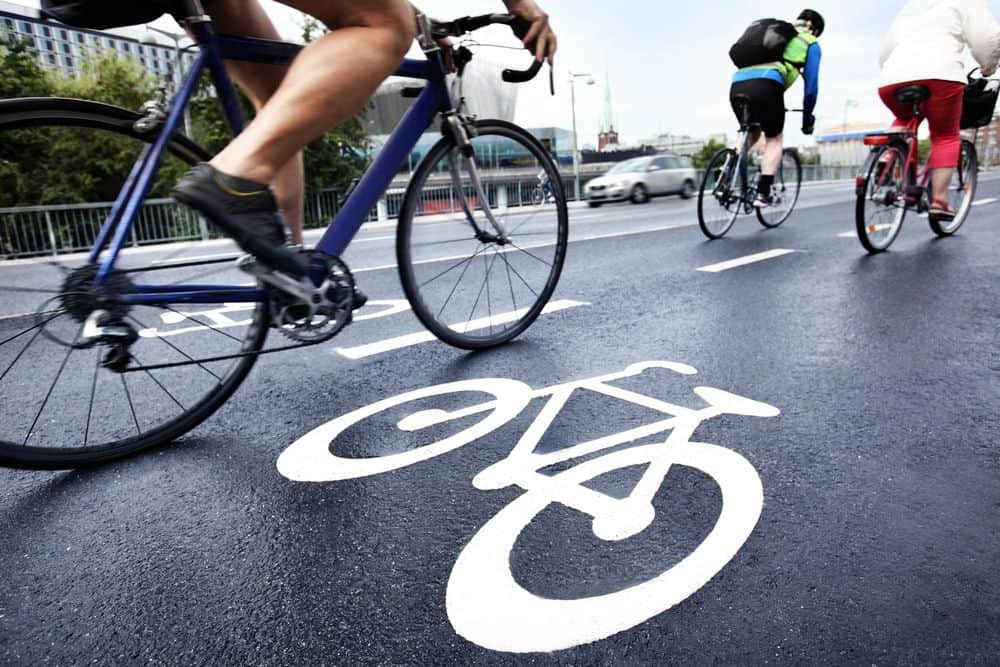 There are many different types of vehicles sharing the roads of Colorado. Whether you drive a car or ride a bike or motorcycle, it’s important to know the local laws for these modes of transportation. Not only will this knowledge help you ensure that you follow the law, but it’s a matter of safety as well. When these vehicles share the road in harmony, it benefits everyone.
There are many different types of vehicles sharing the roads of Colorado. Whether you drive a car or ride a bike or motorcycle, it’s important to know the local laws for these modes of transportation. Not only will this knowledge help you ensure that you follow the law, but it’s a matter of safety as well. When these vehicles share the road in harmony, it benefits everyone.

Source: Depositphotos
Colorado Motorcycle Laws
A new law goes into effect on August 7, 2024, that allows motorcyclists in Colorado to lane filter.
New Motorcycle Lane Filtering & Passing Law (SB24-079):
This law allows a motorcycle driver to pass another vehicle in the same lane if:
- Traffic is stopped.
- The lanes are wide enough to pass safely.
- The motorcycle is moving at 15 miles per hour or less.
- It’s safe to pass.
A motorcycle driver must not pass:
- On the right shoulder.
- To the right of a vehicle in the farthest right-hand lane if the road isn’t a limited-access highway.
- In a lane with traffic going the opposite way.
Lane Filtering vs. Lane Splitting
Lane filtering is often confused with lane splitting, so here’s a breakdown of the differences:
Lane Filtering: This is when a motorcyclist rides between stopped or slow-moving traffic. For example, if cars are stopped at a red light and a motorcyclist moves through traffic to get to the front, this is lane filtering.
Lane Splitting: This is when a motorcyclist rides in between lanes of moving traffic to pass other vehicles. If the cars are traveling at a normal speed, it’s considered lane splitting.
Can You Lane Split in Colorado?
No, lane splitting is illegal in Colorado. Motorcyclists can legally lane filter as of August 7, 2024, but still can’t lane split.
As a motorcyclist, understanding the difference between lane filtering and lane splitting is important for your safety. If you do find yourself involved in an accident, contact a local Denver motorcycle accident lawyer for help.
Colorado Bicycle Laws

Source: Depositphotos
Bicycles are considered vehicles and have the right to ride on roads just like vehicles. They also need to follow the same laws as vehicles, such as adhering to traffic lights and stopping at crosswalks.
However, there is an exception for bicyclists called the Safety Stop. As of April 2022, Colorado allows bicyclists to perform a “safety stop.”
Safety Stop
At intersections, bicyclists ages 15 and over may ride slowly through stop signs without stopping, as long as they yield to pedestrians and any other road users who have the right of way.
Meaning that as long as there is no oncoming traffic, they can slow down instead of fully stopping. This also applies to those aged 15 and over who are riding an electric scooter, skateboard, or another low-speed conveyance.
This also applies at red lights, but in these situations, bicyclists must come to a full stop and check for oncoming traffic before proceeding through the red light. Riders younger than 15 may only perform safety stops if they are riding with a parent or guardian.
Bike Lane Laws
Bicyclists in Colorado should use the bike lane if there is one. Cars should not drive or park in bike lanes and must give bicyclists the right-of-way in these lanes, including at intersections.
If there is no bike lane and a bicyclist is riding slower than traffic, they should ride as close to the right side of the road as possible.
However, there are many instances where bicyclists can ride in any lane, such as:
- If they are riding at the same speed as traffic
- If there is a hazard in the bike lane such as a parked car, debris, pothole, or ice
- If the bicyclist needs to make a left-hand turn
- If there is a right-turn-only lane and the bicyclist intends to go straight
Can bicyclists ride side by side? Yes, two bicyclists may ride side by side in any lane as long as they are not impeding the normal flow of traffic. More than two bicyclists riding side by side is not permitted.
Passing: Cars must maintain a distance of at least three feet when passing a bicyclist. Bicyclists must exercise caution when overtaking vehicles.
Turning: Cyclists must use hand signals to show their intent to turn or stop at least 100 feet before they do so.
Sidewalks: There is no law in Colorado that prohibits bicyclists from riding on sidewalks. On sidewalks, bicyclists need to yield to pedestrians and give an audible signal before passing a pedestrian.
Miscellaneous Colorado Bike Laws
Colorado does not require bicyclists to wear helmets, however, wearing a helmet is strongly recommended for safety. Here are some additional laws that Colorado does require:
Night Riding: Bicycles must have a white front light visible from 500 feet and a red rear reflector visible from 600 feet.
Brakes: Brakes must enable the bicycle to skid on dry pavement within 25 feet from a speed of 10 mph.
Alcohol: Colorado’s DUI and DWAI laws apply to bicyclists since bicycles are considered vehicles. No drinking and riding.
Now that you have a better understanding of Colorado’s bicycle and motorcycle laws, you can feel safer sharing the roads with a variety of vehicles.
This content was paid for and provided by the law firm of Dulin | McQuinn | Young.